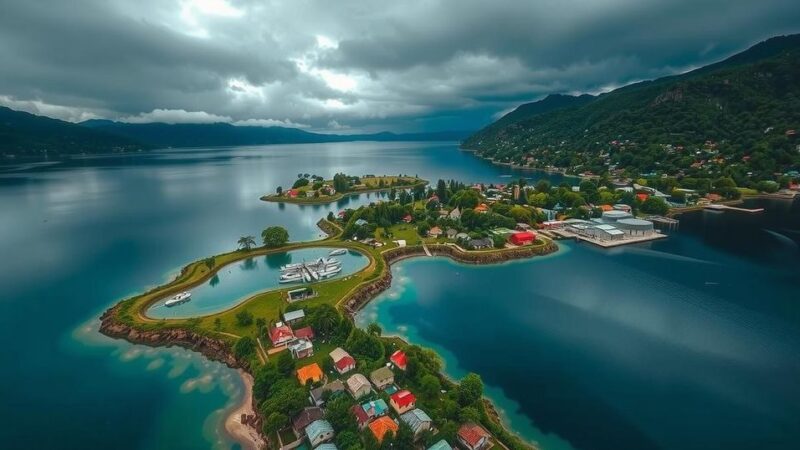A mountain collapse in the Democratic Republic of Congo revealed substantial copper reserves, inciting discussions on colonialism and resource exploitation. The event showed crowds gathering in the mineral-rich Katanga region and drew reactions emphasizing the need for local ownership of resources amid increasing global copper demand.
A recent mountain collapse in the Democratic Republic of Congo (DRC) has unveiled vast copper reserves, simultaneously igniting discussions surrounding colonialism and resource exploitation. The incident, which occurred in the mineral-rich Katanga region, has drawn significant attention online, with many viewers expressing concern about foreign interests in the newfound resources. Dramatic footage depicted crowds gathering to observe the collapse, while individuals close to the site fled as boulders fell. Copper serves as one of the DRC’s most lucrative natural resources, particularly within the Katanga region, renowned for its high-grade deposits. The DRC’s significant copper reserves are essential for various industries, especially in the context of the growing importance of copper in global supply chains, driven by advancements in green energy and electric vehicle production. The international community’s interest in these resources has stirred considerable discourse on ownership and exploitation, highlighting a historical context intertwined with colonialism. As reactions to the event surfaced on social media, many users called for restrictions on foreign access to these newly exposed minerals. Content on platforms such as X (formerly Twitter) reflected a sentiment of protectiveness over Congolese resources and emphasized the necessity for local stewardship of the region’s wealth. Comments included assertions such as, “Hello continental Europe, UK, USA, china – keep your filthy hands away. This belongs to Congo people,” voicing concerns of neo-colonial exploitation.
The Democratic Republic of Congo is a key player in the global copper market, housing some of the highest-quality copper deposits on the planet. The Katanga region, now known as Haut-Katanga Province, is part of the Central African Copperbelt—the largest and richest mineral belt globally. The increasing demand for copper, driven by the rise of renewable energy technologies and electric vehicles, underscores the strategic significance of DRC’s copper reserves. This recent geological event has not only revealed more of this vital resource but has also sparked a vital discourse about the historical context of resource extraction in the country.
In summary, the mountain collapse in the Democratic Republic of Congo has not only unveiled extensive copper deposits but has also rekindled discussions regarding colonial history and the ownership of natural resources. Public sentiment strongly favors safeguarding these resources for the benefit of the Congolese people, reflecting a growing awareness of historical injustices associated with foreign exploitation of African resources. The incident serves as a poignant reminder of the complex interplay between resource wealth, local governance, and international interests.
Original Source: www.hindustantimes.com





